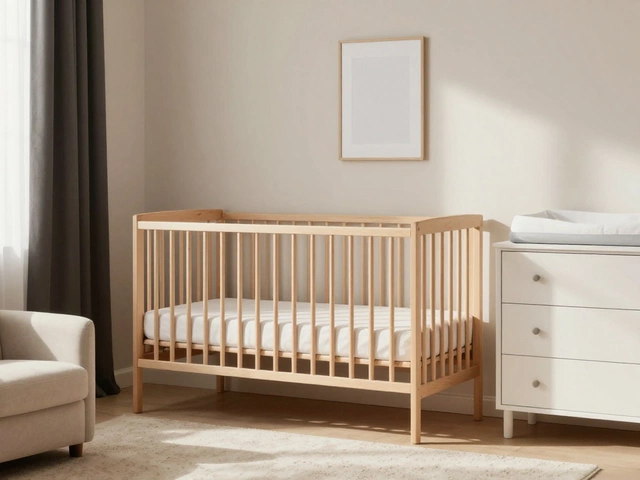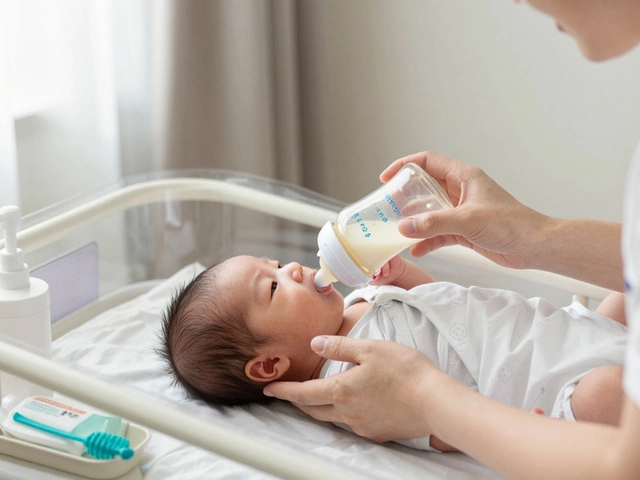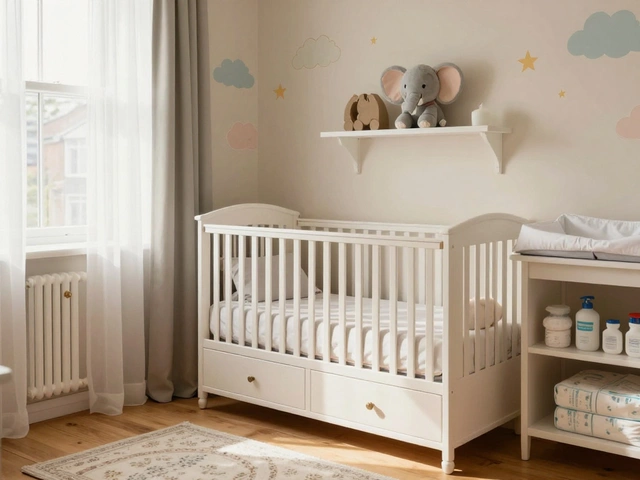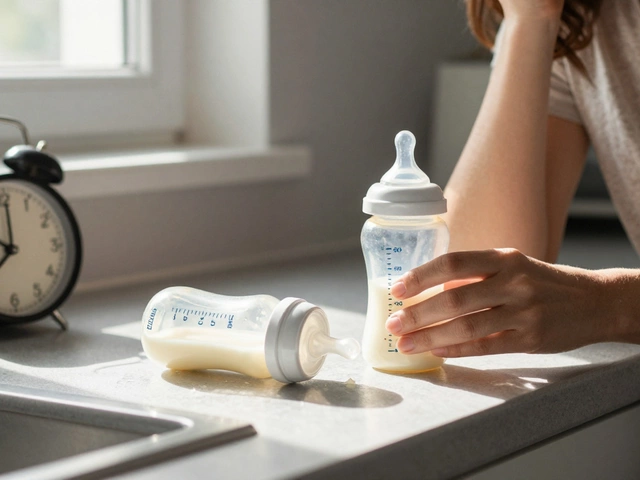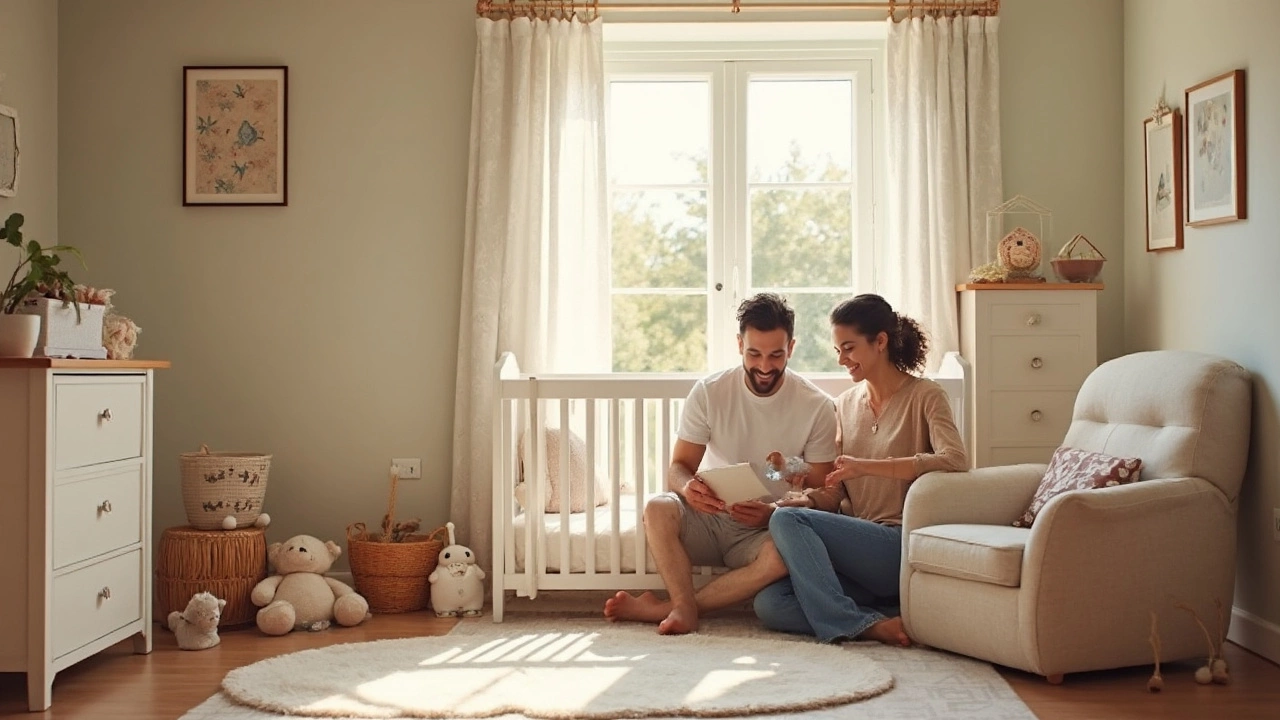
Think baby gear is all adorable onesies and stuffed animals? Wait until you price out a crib or glider—those numbers can sting. Parents today spend anywhere from $500 to $3,000 just on nursery furniture if they’re buying new, brand-name items. And honestly, it can be even higher if you go wild with designer pieces or custom themes.
But here’s the catch: not every item labeled “must-have” is really essential for your baby’s room. Sure, stores might try to sell you the fanciest dresser or an impossible-to-wipe-down changing table, but that doesn’t mean you actually need them. Knowing where to invest—and where you can save—makes a huge difference when you’re prepping for your new arrival.
Before you tap your credit card for that matching nursery set, check out what other parents found truly useful—and what ended up collecting dust in the corner. You’ll save hundreds (maybe even thousands) by focusing on what your family actually needs.
- Sticker Shock: The Real Numbers for Nursery Furniture
- What’s Essential and What’s Not?
- Saving Without Skimping: Budget-Friendly Tricks
- The Hidden Costs New Parents Miss
- Final Tips for Stress-Free Nursery Spending
Sticker Shock: The Real Numbers for Nursery Furniture
If you think all nursery stuff is just cute and tiny, wait till you see the prices. The average first-time parent in the US drops between $1,000 and $2,500 on nursery furniture alone. And if you’re looking at high-end cribs and dressers, that can hit over $4,000 without even blinking. Actual numbers help you plan, so here’s what you’re really up against:
| Item | Average Price (Low – High) |
|---|---|
| Crib | $150 – $1,200 |
| Convertible Crib (changes to toddler bed) | $180 – $1,400 |
| Crib Mattress | $50 – $250 |
| Changing Table | $80 – $350 |
| Dresser | $100 – $650 |
| Nursing/Glider Chair | $120 – $700 |
| Bookshelf | $60 – $500 |
| Nightstand/Side Table | $50 – $250 |
Some folks stack up everything brand new, but others hit up secondhand stores, Facebook Marketplace, or swap groups to chop those prices in half. For instance, a well-cared-for crib can cost less than $100 secondhand, but always double-check for safety recalls and sturdy frames. Whatever you do, don’t skip on the mattress quality—a firm, new mattress is one place you don’t want to cut corners. Your baby budget needs breathing room for unexpected stuff like storage bins or blackout curtains that sneak onto your list once you start actually organizing the room.
Here’s another thing: Some nursery “packages” look like deals but bundle in random stuff you might not need. Always break it down, line by line, so you’re not paying a premium for matching drawer pulls.
What’s Essential and What’s Not?
You walk into a baby store and suddenly, everything looks like you’ll need it. Spoiler alert: you won’t. Here’s a reality check on what belongs in your cart—and what can wait or skip entirely.
First up, the true essentials. You 100% need a safe crib, a crib mattress, fitted sheets, and a spot to store baby’s clothes. Some parents swap changing tables for a changing pad you lay on top of a dresser (way cheaper and seriously, just as easy). Blackout curtains aren’t glamorous, but they help your little one nap anytime—so add those to your list if you value sleep (who doesn’t?).
Here’s a quick breakdown of nursery essentials versus nice-to-haves:
- Crib: Must-have. Stick with models that meet today’s safety standards—skip drop-side cribs, which were banned in the US.
- Crib mattress and 2-3 fitted sheets: Buy new for hygiene and safety.
- Dresser or storage bins: Babies outgrow clothes at lightning speed. Keep things organized, or you’ll lose socks daily.
- Changing pad: Costs a fraction of a whole changing table.
- Comfy chair or glider: For those endless late-night feeds, but honestly, it can be any chair with good back support.
- Nightlight: Save yourself from stumbling around at 3 a.m.
Now, what about all the flashy extras? Wipe warmers, diaper stackers, matching crib bumpers—they look cute, but most parents never use them. In fact, bumpers and pillows can increase the risk of SIDS, so just skip them entirely. Fancy mobiles and sound machines are more for you than your baby, so keep those low on the list if you’re watching your budget.
Check out this table for quick “need it or not” answers on common nursery items:
| Item | Essential? | Average Price (2024) |
|---|---|---|
| Crib | Yes | $150 - $600 |
| Crib mattress | Yes | $60 - $200 |
| Changing table | No | $100 - $400 |
| Glider/Chair | Optional | $150 - $800 |
| Dresser/Storage | Yes | $100 - $500 |
| Blackout curtains | Optional | $30 - $100 |
| Decor/Mobiles | No | $30+ |
If you feel sucked into the baby product vortex, just repeat: “Is this something my baby will actually use, or will it end up being a dust collector?” Focus your baby room budget on safe nursery furniture and practical basics, and you’ll be set. If you get gifts or hand-me-downs of non-essentials, consider them a bonus—not a need.
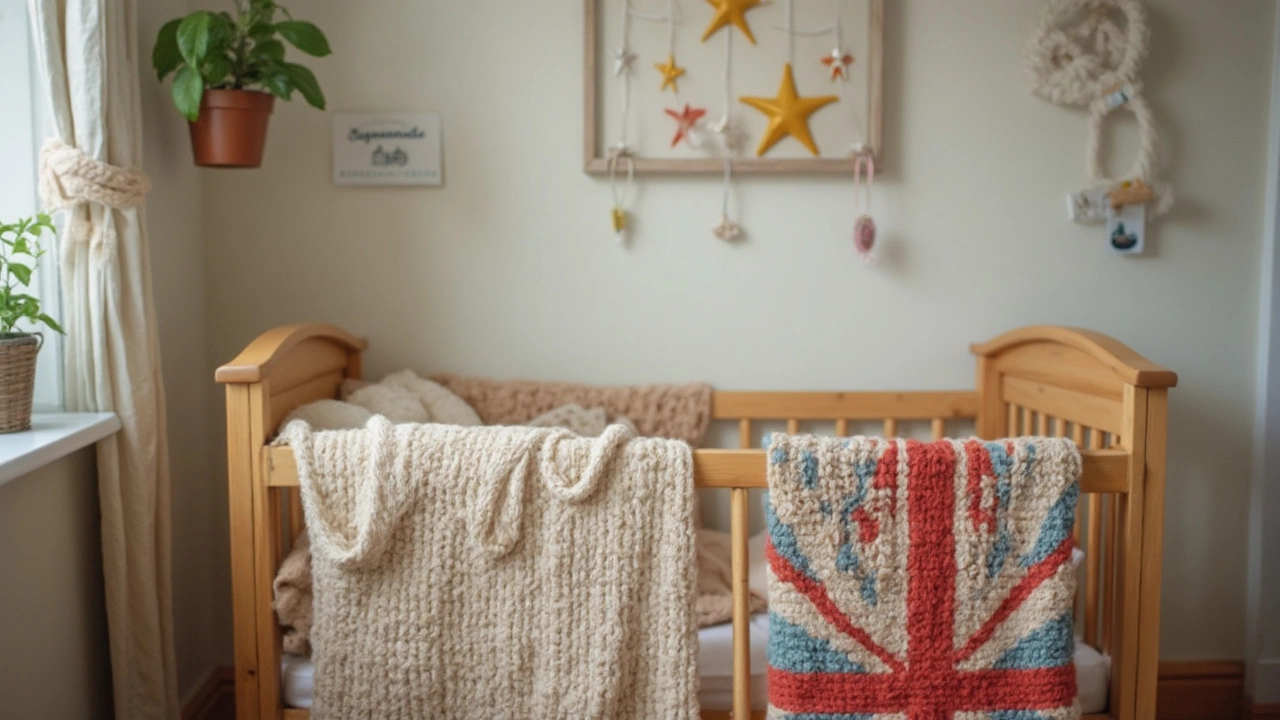
Saving Without Skimping: Budget-Friendly Tricks
It’s wild how fast the bill racks up when you start shopping for nursery furniture. But before you get sticker shock, let’s talk about some real ways to save money—without ending up with stuff that’ll fall apart before your baby takes their first steps.
First, buy the main things new, but go secondhand for everything else. Safety rules change on cribs and mattresses, so buying those new is smart. But for dressers, shelves, and rocking chairs? Gently used can mean massive savings. A 2024 survey from BabyCenter found that 63% of new parents used at least one secondhand furniture item in their nursery, saving an average of $320.
Another hack: few baby items get used for long, so look for stuff that grows with your kid. Convertible cribs that turn into toddler beds, changing tables that become dressers, and modular storage all help you stretch each dollar for years.
- Shop local Facebook Marketplace or parent groups: People often give away or sell nearly-new pieces for a fraction of the retail price.
- Buy off-season or open-box: Major retailers mark down last year’s lines by as much as 60% when new designs come out in the spring and fall.
- Skip the matching sets: Standalone items are almost always cheaper than those bundled “nursery packages.”
- Don’t get sucked in by extras: Mobiles, fancy changing toppers, and wipe warmers rarely get used for long—save your budget for the basics.
Bold money-saving moves aren’t just about where you buy, but also what you actually need. Here’s a quick look at the average price range for key pieces so you can see where to slash your spend:
| Item | Average New Price ($) | Average Used Price ($) |
|---|---|---|
| Crib | 200-500 | 50-150 |
| Changing Table | 100-300 | 20-60 |
| Rocking Chair/Glider | 150-800 | 40-250 |
| Dresser | 120-400 | 40-100 |
One last thing—swap with friends. Lots of parents are happy to pass on gently used nursery items because, honestly, there’s not much resale value in baby furniture. Just check for recalls or safety updates first to keep your nursery safe and budget-friendly.
The Hidden Costs New Parents Miss
First-timers usually budget for a crib and dresser, but there’s always something extra creeping onto receipts. Delivery fees for larger nursery pieces can run $50–$150 each, even for online orders. Some stores charge assembly fees too, which can add another $80–$200 if you aren’t up for DIY furniture building at nine months pregnant.
Don’t forget mattress protectors and fitted sheets. Most cribs don’t come with a mattress or bedding, so if you’re eyeing a $250 crib, you’re likely spending another $100–$200 for a baby budget-friendly setup. Even changing pads aren’t always included in the changing table price tag. And if you opt for a convertible crib, future conversion kits (to turn it into a toddler or full-size bed) cost $100–$250 down the line.
Then there’s babyproofing to make the nursery safe—think outlet covers, furniture anchors, and closet locks. This stuff quickly adds $50–$150 to your total. Sound machines, blackout curtains, and humidifiers also end up in carts. Most parents only realize these are necessary after their first sleepless week.
For city dwellers or those tight on space, don’t overlook storage bins, under-crib baskets, or closet organizers. Storing diapers, wipes, and tiny clothes takes more room than you’d expect. Custom shelving is a tempting splurge, but simpler stackable bins do the job just fine at a fraction of the price.
Add it all up and the stuff you didn’t plan for often tips your nursery tab way past your original guess. Knowing about these extras means you can watch for deals ahead of time and stash away a little more cash for that first, much-needed coffee run after your baby arrives.
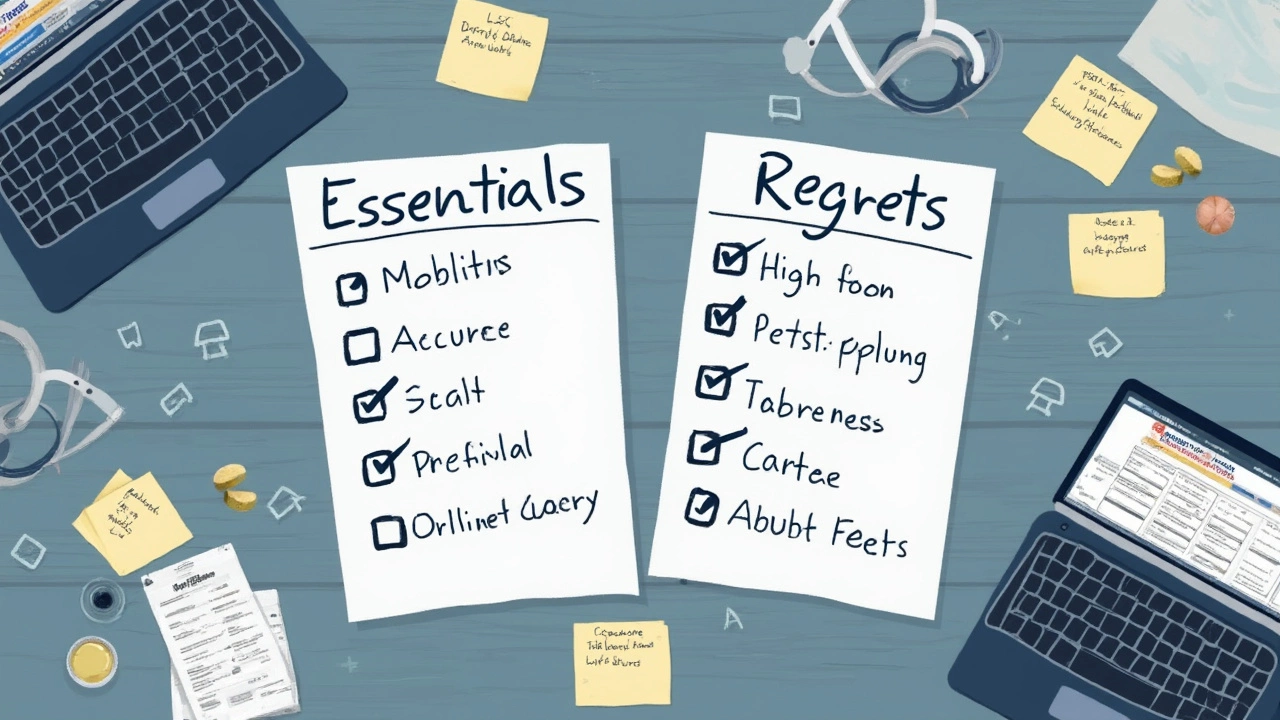
Final Tips for Stress-Free Nursery Spending
If you want to keep your sanity and your budget intact, it helps to have a clear plan before you swipe your card. Setting an overall budget, making a wish list, and separating “nice-to-haves” from “need-right-nows” can seriously cut down on regrets and stress. Remember, the baby doesn’t care if their dresser matches the crib. You’re doing this for your peace of mind, not theirs.
- baby budget first—decide how much total you’re ready to spend, and stick to it. Loads of parents end up splurging in the last month because panic sets in, but the basics really don’t change.
- Go secondhand for the big stuff. A gently used crib or dresser can slash your costs by 50-70%. Just double-check for safety recalls first.
- Don’t rush to buy everything. Your newborn won’t use a toddler bed, child-sized chair, or toy organizer for months (or years). Buy what your baby will need in the first few months, and add the rest later.
- Keep an eye out for sales. Black Friday, Amazon Prime Day, and seasonal clearances can mean huge savings on nursery furniture.
- Ask around. Friends and family might have barely-used gear in their attic begging for a new life. Accept hand-me-downs. You can sanitize most stuff, and it costs nothing.
Here’s a reality check with current numbers, so you get a ballpark figure:
| Nursery Item | Low-End Price | High-End Price |
|---|---|---|
| Crib | $100 | $800 |
| Changing table | $65 | $400 |
| Glider/Rocker | $130 | $700 |
| Dresser | $70 | $600 |
| Bookshelf/Storage | $40 | $350 |
If you aim for the mid-range, you’re looking at about $800–$1,200 for a fully furnished nursery. But so many parents spend less by mixing secondhand finds, shopping sales, and focusing on essentials first.
Bottom line: Don’t let pretty Instagram nurseries or checkout-lane pressure get to you. Babies need comfort and safety, not a perfect guest room. Smart choices now can save you cash for the stuff you’ll really want once your little one turns into a toddler whirlwind.


